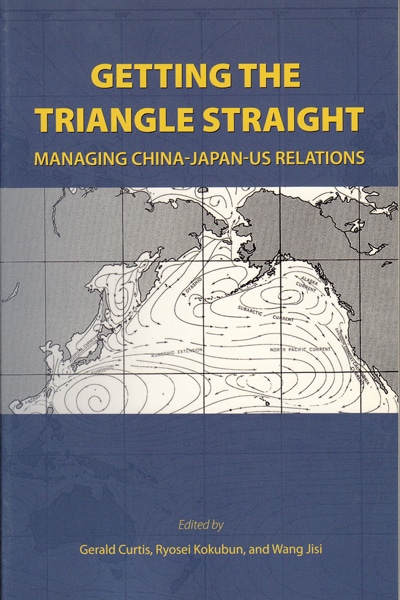As the balance of power in Asia shifts, relations among China, Japan, and the United States are becoming increasingly important for the future of the region as well as for the rest of the world. Trilateral relationships tend to be unstable, but the dynamics of China-Japan-US relations are further complicated by historical enmities, differing systems of governance, competition in the economic and security realms, and growing interdependence. While most studies of these countries focus on their bilateral ties, Getting the Triangle Straight turns its attention to the ways in which they relate to one another in a trilateral context.
In this volume, the result of JCIE’s project, Managing China-Japan-US Relations and Strengthening Trilateral Cooperation, three leading experts from China, Japan, and the United States are joined by nine younger, emerging scholars to analyze the relationship and offer recommendations for better managing the volatile dynamics of trilateral relations.
Contents
1. Foreword
Tadashi Yamamoto, President, Japan Center for International Exchange
The Trilateral Dynamics of China-Japan-US Relations
2. Getting the Triangle Straight: China, Japan, and the United States in An Era of Change
Gerald Curtis, Burgess Professor of Political Science, Columbia University
3. The China–Japan–United States Triangle: A Power Balance Analysis
Wang Jisi, Dean, School of International Studies, Peking University
4. The China-Japan Relationship, East Asia Community, and the Dynamics of Trilateral Relations
Ryosei Kokubun, Dean, Faculty of Law and Politics, Keio University
Trilateral Relations and Regional Security
5. China-US-Japan Relations and Northeast Asia’s Evolving Security Architecture
Gui Yongtao, Associate Professor, Peking University
6. Prospects for Trilateral Security Cooperation
Andrew L. Oros, Associate Professor, Washington College
Managing Challenges to Trilateral Relations
7. Taiwan in the China-Japan-US Triangle
Yasuhiro Matsuda, Associate Professor, Tokyo University
8. Explaining Stability in the Senkaku (Diaoyu) Islands Dispute
M. Taylor Fravel, Associate Professor, Massachusetts Institute of Technology
9. Addressing Climate Change: Why US-China Cooperation Lags behind China-Japan Cooperation
Zhang Haibin, Associate Professor, Peking University
Economic Integration and Trilateral Relations
10. Asianism Rising: Assessing China-Japan-US Dynamics in Regional Trade and Investment Realities
Saadia M. Pekkanen, Professor, University of Washington
11. Cooperation and Competition in the Chinese Automobile Industry: The Emerging Architecture of China-Japan-US Economic Relations
Katsuhiro Sasuga, Associate Professor, Tokai University
Mutual Perceptions in China-Japan-US Relation
12. Changing Japanese Perceptions and China-Japan Relations
Rumi Aoyama, Professor, Waseda University
13. Chinese Public Perceptions of Japan and the United States in the Post–Cold War Era
Fan Shiming, Associate Professor, Peking University
By Gerald Curtis, Ryosei Kokubun, and Wang Jisi, eds.

